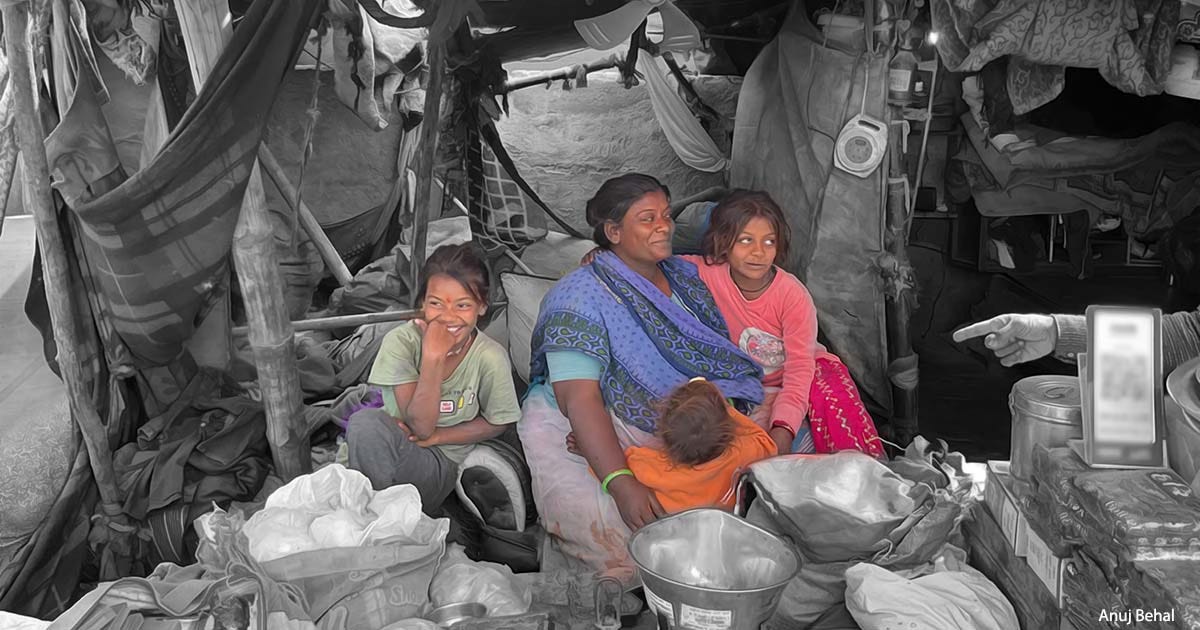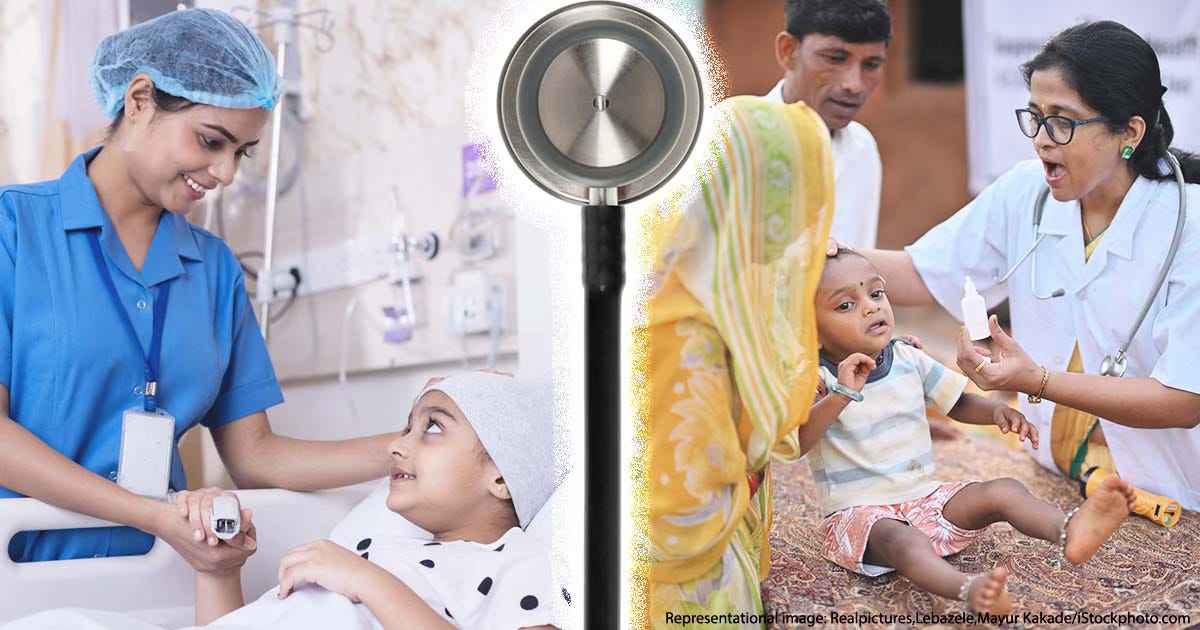Heatwaves, Hunger, And A Growing Health Crisis
This week, heat impacts on women home-based workers, health crisis among urban poor, millions still left out of PDS, UP's prep for extreme heat, & tariff shocks to Varanasi's weavers
Hello,
This week IndiaSpend's coverage ranges from Delhi’s scorching slums to Varanasi’s silent looms and parts in between, where India’s most vulnerable face compounding crises.
Women home-based workers like Paro and Gauri Ben battle 52.3°C heatwaves that slash incomes and health, their cramped homes doubling as stifling workplaces. Not that far away as the crow flies, Uttar Pradesh gears up to meet the threat of rising heat, with the Yogi Adityanath government declaring heatwaves as a state-specific disaster.
Across Indian cities, the poorest children suffer higher mortality than rural counterparts, with tuberculosis and malnutrition rife in overcrowded slums, as public health systems falter. A delayed Census exacerbates food insecurity, excluding over 120 million from subsidized grains, and thus risking stunting. Meanwhile, Varanasi’s Banarasi sari weavers reel from a 26% U.S. tariff, stalling exports and deepening debt for artisans already grappling with rising costs. These stories, reported by IndiaSpend, reveal how climate stress, policy gaps, and global trade shifts threaten the livelihoods, health, and futures of millions, underscoring the urgent need for equitable interventions.
The Invisible Workforce: Heat’s Toll on Home-Based Workers
In Delhi’s sweltering slums, women like Paro and Gauri Ben toil in home-based work, their livelihoods scorched by 2024’s record-breaking heatwaves, which hit 52.3°C. Paro stuffs chuna bottles in a 50-square-foot room, earning Rs 15–25 nightly, while Gauri, a pheriwali, mends clothes under a heat-trapping tin roof.
Across India, 17.2 million women—rolling papads, stitching garments, or crafting gilets—face similar struggles in cramped, unventilated homes. Soaring temperatures slash productivity by up to 30%, with noxious fumes, water shortages, and caregiving duties eroding earnings. Climate extremes, from heat to floods, push these invisible workers toward debt and health crises. Living in precarious settlements without tenure, they juggle unpaid chores and erratic pay.
Experts call for formal recognition, better infrastructure, and secure land rights to protect this vital workforce, whose labor underpins local economies but who remain ignored in policy. Anuj Behal reports.
Urban Poor Face Dire Health Disparities
A new study reveals that India’s urban poor endure worse health outcomes than their rural counterparts, despite overall health improvements. Drawing from various government datasets, the study highlights stark inequities: India's urban poor children face higher under-five mortality (63.4 per 1,000) than rural poor (58.8); the rate tips even that of Mozambique (62). Tuberculosis (416 per 100,000) and diarrheal diseases (10% of children) hit urban slums harder, fueled as they are by overcrowding, pollution, and sanitation gaps. Despite better urban healthcare infrastructure, slum-dwellers struggle to access it, and have to resort to costly private care.
The National Urban Health Mission, hampered by underfunding and fragmented governance, fails to bridge these gaps. Urban inequalities outstrip rural ones, with the poorest facing 3.3 times higher mortality than the richest. Experts urge increased health spending, unified administration, and learning from models like Thailand’s to ensure equitable care for India’s urban vulnerable. A report by Prachi Salve.
Census Delay Exacerbates Food Insecurity in India
India’s overdue census, now delayed by four years and with a slashed 2025 budget, threatens millions with exclusion from the Public Distribution System (PDS), vital for food security. The National Food Security Act (NFSA) covers 806 million people, falling short of the estimated 920 million based on 2025 population projections, leaving over 120 million without subsidized foodgrains. This gap, compounded by a 14% undernourishment rate (194 million people), risks stunting millions of children, with lifelong cognitive and economic consequences.
Despite PDS’s role in reducing poverty and improving diets, outdated 2011 Census data and rigid quotas exclude many, particularly urban migrants. Experts like Dipa Sinha advocate universalizing PDS with exclusion criteria to ensure access. The delay deepens malnutrition and health risks, underscoring the urgent need for a timely Census to secure India’s food entitlements. A report by Shreehari Paliath.
U.S. Tariffs Threaten Varanasi’s Banarasi Sari Weavers
In Varanasi, famed for its handwoven Banarasi silk saris, a 26% tariff imposed by US President Donald Trump has plunged the city’s weaving communities into crisis. With 35% of Varanasi’s 600-crore-rupee silk trade targeting the U.S., the tariff—part of a trade balancing policy—has stalled exports worth crores.
This hits weavers hard: In areas like Bajardiya, weavers like Mohammad Shoeb earn just Rs 9,000–10,000 monthly, barely covering essentials amid rising costs and reduced work. Over a million people depend on this industry, but silent looms and empty alleys signal distress. Exporters face piled-up stock while weavers, burdened by debt and soaring electricity bills, migrate to cities like Surat.
The tariff, coupled with local challenges—water scarcity, inadequate healthcare, and competition from cheaper imitations—threatens the survival of this cultural craft, pushing artisans toward unemployment and despair. For IndiaSpend Hindi, Pawan Kumar Maurya reports from the ground.
UP govt girds up to battle heatwaves
Uttar Pradesh faces unprecedented heat challenges, with temperatures rising 4°C over four years and heat wave days surging 700% in the period 2021-2024. Last year, 5,700+ residents were hospitalized for heat stroke with 52 confirmed deaths. For 2025, meteorologists predict even more severe conditions, with temperatures consistently exceeding 40°C from April-June.
Following the lead of states such as Tamil Nadu and Karnataka, the Yogi government has now declared heat waves as a state-level disaster, and implemented a comprehensive action plan that includes establishing early warning systems, dedicated control rooms, and a helpline (1070). Special measures target vulnerable regions including Bundelkhand, Jhansi, and Lucknow. Mithilesh Dhar Dubey reports for IndiaSpend Hindi.







